Brookfield DV2+Pro Viscometer User Manual




 BROOKFIELD
BROOKFIELD DV-II+Pro
DV-II+Pro





Viscometer
Operating Instructions
Manual No. M03-165-F0612
SPECIALISTS IN THE
MEASUREMENT AND
CONTROLOFVISCOSITY
with o ces in : Boston • Chicago • London • Stuttgart • Guangzhou
BROOKFIELD ENGINEERING LABORATORIES, INC.
11 Commerce Boulevard, |
M iddleboro, M A 02346 |
USA |
|
TEL 508-946-6200 |
or 800-628-8139 (USA e xcluding |
MA) |
|
FAX 508-946-6262 |
INTERNET |
http://www.brookŒeldengineering.com |
|
|
|
|
|
Brookfield Engineering Labs., Inc. |
Page 1 |
Manual No. M03-165-F0612 |
|

|
|
|
|
Table of Contents |
|
I. INTRODUCTION................................................................................................... |
5 |
||||
I.1 Components................................................................................................................................ |
6 |
||||
I.2 |
Utilities....................................................................................................................................... |
|
8 |
||
I.3 |
Specifications............................................................................................................................. |
8 |
|||
I.4 |
Installation.................................................................................................................................. |
|
9 |
||
I.5 |
Safety Symbols and Precautions.............................................................................................. |
10 |
|||
I.6 |
Key Functions.......................................................................................................................... |
11 |
|||
I.7 |
Cleaning................................................................................................................................... |
|
12 |
||
II. GETTING STARTED........................................................................................ |
13 |
||||
II.1 Autozero.................................................................................................................................. |
|
13 |
|||
II.2 |
Spindle Selection.................................................................................................................... |
14 |
|||
II.3 |
Speed Selection, Setting, Running.......................................................................................... |
15 |
|||
II.4 |
Display Selection.................................................................................................................... |
17 |
|||
II.5 Autorange................................................................................................................................ |
|
18 |
|||
II.6 Out of Range........................................................................................................................... |
19 |
||||
II.7 Temperature Display............................................................................................................... |
20 |
||||
II.8 |
Printing ................................................................................................................................... |
|
20 |
||
II.9 |
External Control Mode........................................................................................................... |
21 |
|||
II.10 Making Viscosity Measurements.......................................................................................... |
22 |
||||
II.11 Time Modes for Viscosity Measurement.............................................................................. |
23 |
||||
III. MAKING VISCOSITY AND YIELD MEASUREMENTS.......................... |
24 |
||||
III.1 |
Quick Start............................................................................................................................. |
24 |
|||
III.2 |
Preparations for Making Measurements................................................................................ |
24 |
|||
III.3 |
Selecting a Spindle/Speed..................................................................................................... |
25 |
|||
III.4 |
Multiple Data Points.............................................................................................................. |
25 |
|||
IV. OPTIONS........................................................................................................... |
|
26 |
|||
IV.1 Introduction to OPTIONS...................................................................................................... |
26 |
||||
IV.2 |
Setup...................................................................................................................................... |
|
28 |
||
|
IV.2.1 |
Temperature Display..................................................................................................... |
29 |
||
|
IV.2.2 |
Units of Measurement................................................................................................... |
30 |
||
|
IV.2.3 Motor Speed Set Selection............................................................................................ |
30 |
|||
|
|
IV.2.3.1 |
LV/RV Speeds....................................................................................................... |
31 |
|
|
|
IV.2.3.2 |
Custom Speeds...................................................................................................... |
31 |
|
|
IV.2.4 |
Printer Output Port........................................................................................................ |
31 |
||
|
IV.2.5 |
Data Averaging.............................................................................................................. |
32 |
||
IV.3 |
Time Modes.......................................................................................................................... |
33 |
|||
|
IV.3.1 |
Time to Stop.................................................................................................................. |
33 |
||
|
IV.3.2 |
Time to Torque.............................................................................................................. |
36 |
||
|
IV.3.3 |
Print Time Interval........................................................................................................ |
38 |
||
|
IV.3.4 |
PC Program (On/Off).................................................................................................... |
39 |
||
Brookfield Engineering Labs., Inc. |
Page 3 |
Manual No. M03-165-F0612 |
|
IV.3.5 |
Download a Program............................................................................................... |
40 |
|
IV.3.6 |
Run a Program......................................................................................................... |
41 |
V. DVLOADER SOFTWARE................................................................................ |
43 |
||
V.1 |
B.E.V.I.S. Overview............................................................................................................. |
43 |
|
V.2 Description of B.E.V.I.S. Commands................................................................................... |
43 |
||
V.3 Creating a B.E.V.I.S. Program............................................................................................. |
44 |
||
V.4 Downloading a B.E.V.I.S. Program..................................................................................... |
46 |
||
V.5 |
Example Programs............................................................................................................... |
47 |
|
VI. AUTOMATED DATA GATHERING & ANALYSIS..................................... |
49 |
||
V1.1 |
WINGATHER.................................................................................................................... |
49 |
|
V1.2 |
Rheocalc............................................................................................................................ |
53 |
|
V1.3 |
Math Models...................................................................................................................... |
56 |
|
V1.3.1 The Power Law (Ostwald) Model............................................................................. |
57 |
||
V1.3.2 |
The Herschel-Bulkley Model..................................................................................... |
58 |
|
V1.3.3 |
The Bingham Model.................................................................................................. |
60 |
|
V1.3.4 |
The Casson Model..................................................................................................... |
61 |
|
V1.3.5 Other Common Rheological Models......................................................................... |
63 |
||
Appendix A - Cone/Plate Viscometer Set-Up............................................................ |
65 |
||
A.1 Electronic Gap Setting Features............................................................................................. |
65 |
||
A.2 Setup....................................................................................................................................... |
|
66 |
|
A.3 Setting the Gap....................................................................................................................... |
67 |
||
A.4 Verifying Calibration.............................................................................................................. |
68 |
||
Appendix B - Viscosity Ranges................................................................................. |
69 |
||
Appendix C - Variables in Viscosity Measurements................................................. |
74 |
||
Appendix D - Spindle and Model Codes................................................................... |
76 |
||
Appendix E - Calibration Procedures........................................................................ |
79 |
||
Appendix F - The Brookfield Guardleg..................................................................... |
86 |
||
Appendix G - Speed Sets........................................................................................... |
88 |
||
Appendix H - Communications................................................................................. |
89 |
||
Appendix I - Model S Laboratory Stands................................................................. |
91 |
||
Appendix J - DVE-50A Probe Clip........................................................................... |
93 |
||
Appendix K -Fault Diagnosis and Troubleshooting.................................................. |
94 |
||
Appendix L - Instrument Dimensions....................................................................... |
98 |
||
Appendix M - Online Help and Additinal Resources................................................ |
99 |
||
Appendix N - Warranty Repair and Service............................................................ |
100 |
||
Viscosity Test Report................................................................................. |
Tear out page |
||

I.INTRODUCTION
The Brookfield DV-II+Pro Viscometer measures fluid viscosity at given shear rates. Viscosity is a measure of a fluid’s resistance to flow. You will find a detailed description of the science of viscosity in the Brookfield publication “More Solutions to Sticky Problems” a copy of which was included with your DV-II+Pro.
The DV-II+Pro offers exceptional versatility in modes of control allowing for traditional standalone operation, automatic operation through programs downloaded from the PC or with complete control by PC using Brookfield Rheocalc Software.
•The DV-II+Pro can be used as a traditional Brookfield viscometer for collection of single speed viscosity data through the easy to use keypad; just select the spindle and speed and read the value from the display. [See Section II, Getting Started]
•The Brookfield DVLoader Software can be used to program the DV-II+Pro to control all aspects of the test and data collection without the need for the operator to monitor the instrument; just start the program and return to the printed test data (printer is optional).
[See Section V, DVLoader Software]
•The Brookfield Rheocalc Software will perform all control and data collection functions of the DV-II+Pro from the PC while also providing a platform for advanced data collection and analysis. [See Section II.9, External Control]
In any of these modes of control, the DV-II+Pro will provide the best in viscosity measurement and control.
The principal of operation of the DV-II+Pro is to drive a spindle (which is immersed in the test fluid)throughacalibratedspring. Theviscousdragofthefluidagainstthespindleismeasuredby the spring deflection. Spring deflection is measured with a rotary transducer. The measurement range of a DV-II+Pro (in centipoise or milliPascal seconds) is determined by the rotational speed of the spindle, the size and shape of the spindle, the container the spindle is rotating in, and the full scale torque of the calibrated spring.
There are four basic spring torque series offered by Brookfield:
Model |
Spring Torque |
|
dyne/cm |
milli Newton/m |
|
LVDV-II+Pro |
673.7 |
0.0673 |
RVDV-II+Pro |
7,187.0 |
0.7187 |
HADV-II+Pro |
14,374.0 |
1.4374 |
HBDV-II+Pro |
57,496.0 |
5.7496 |
The higher the torque calibration, the higher the measurement range. The measurement range for each torque calibration may be found in Appendix B.
All units of measurement are displayed according to either the CGS system or the SI system.
1.Viscosity appears in units of centipoise (shown as “cP”) or milliPascal-seconds (shown as “mPa•s”) on the DV-II+Pro Viscometer display.
2.Shear Stress appears in units of dynes/square centimeter (“D/cm2”) or Newtons/square meter (“N/m2”).
3.Shear Rate appears in units of reciprocal seconds (“1/SEC”).
4.Torque appears in units of dyne-centimeters or Newton-meters (shown as percent “%” in both cases) on the DV-II+Pro Viscometer display.
Note: To change CGS to SI units on the display - see Section IV.2.2.
Brookfield Engineering Labs., Inc. |
Page 5 |
Manual No. M03-165-F0612 |

TheequivalentunitsofmeasurementintheSIsystemarecalculatedusingthefollowingconversions:
Viscosity: |
|
SI |
= |
CGS |
1 mPa•s |
1 cP |
|||
Shear Stress: |
1 |
Newton/m2 |
= 10 dyne/cm2 |
|
Torque: |
1 |
Newton/m |
= |
107 dyne/cm |
References to viscosity throughout this manual are done in CGS units. The DV-II+Pro Viscometer provides equivalent information in SI units.
I.1 Components
Please check to be sure that you have received all components, and that there is no damage. If you are missing any parts, please notify Brookfield Engineering or your local Brookfield agent immediately. Any shipping damage must be reported to the carrier.
|
Component |
Part Number |
Quantity |
|
|
|
|
|
DV-II+Pro Viscometer |
varies |
1 |
|
Model S Laboratory Stand |
MODEL S |
1 |
|
Spindle Set with Case |
varies |
1 |
|
LVDV-II+Pro set of four spindles |
SSL |
or |
|
RVDV-II+Pro set of six spindles (#2 - #7) |
SSR |
or |
|
HA/HBDV-II+Pro set of six spindles (#2 - #7) |
SSH |
|
For Cone/Plate versions: a spindle wrench (CP-23), one cone spindle (CPE-XX or CPA-XX ), a sample cup, and Part No. CPE-44Y replaces the spindle set.
Power Cord |
|
1 |
DVP-65 for 115 or |
DVP-65 |
|
DVP-66 for 230 |
DVP-66 |
|
RTD Temperature Probe |
DVP-94Y |
1 |
Guard Leg: |
|
1 |
LVDV-II+Pro |
B-20Y |
|
RVDV-II+Pro |
B-21Y |
|
Carrying Case |
DVE-7Y |
1 |
DVLOADER CD ROM |
DVLOADER |
1 |
Cable (DV-II+Pro to computer) (RS-232) |
DVP-80 |
1 |
Operating Manual |
M03-165 |
1 |
Shipping Cap |
XXX |
1 |
Brookfield Engineering Labs., Inc. |
Page 6 |
Manual No. M03-165-F0612 |
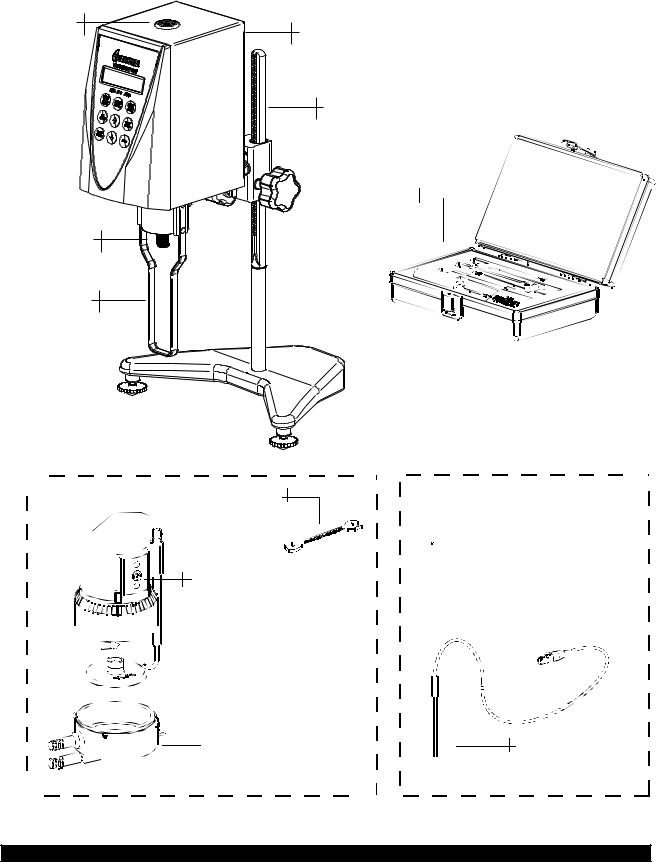
COMPONENT DIAGRAM
Bubble |
DV-II Pro |
|
Level |
||
Viscometer |
||
|
Model S
Laboratory Stand
Shipping
Cap
Guard Leg
Cone/Plate Option |
Wrench |
|
Toggle Switch for |
|
Electrical Gap |
|
Tension Bar |
|
Cone Spindle |
Spindle Set
LV Spindle Set shown above
Temperature Probe

 Temperature Probe Clip
Temperature Probe Clip
Sample Cup |
Temperature Probe |
Brookfield Engineering Labs., Inc. |
Page 7 |
Manual No. M03-165-F0612 |
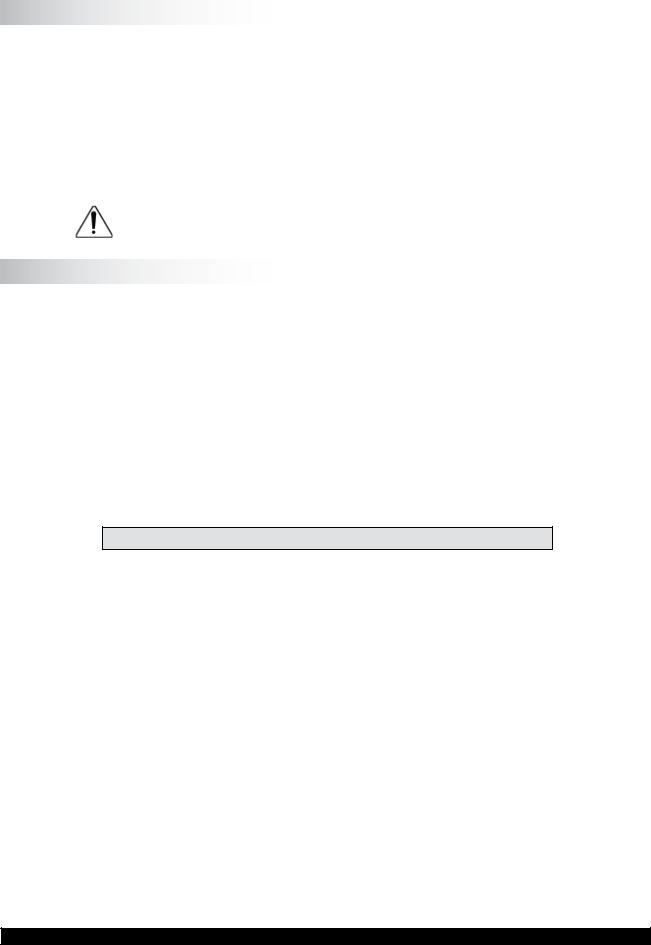
I.2 Utilities |
|
|
|
Input Voltage: |
115 VAC or 230 VAC |
|
|
Input Frequency: |
50/60 Hz |
|
|
Power Consumption: |
30 VA |
|
|
Power Cord Color Code: |
United States |
Outside United States |
|
Hot (live) |
|||
Black |
Brown |
||
Neutral |
White |
Blue |
|
Ground (earth) |
Green |
Green/Yellow |
|
Main supply voltage fluctuations are not to exceed ±10% of the nominal supply |
|||
voltage. |
|
|
|
I.3 Specifications |
|
|
Speeds: |
Choice of 3 options. |
|
|
Instrument has “Interleaved” speeds when manufactured. |
|
Standalone |
Interleaved: |
LV/RV (18 speeds) 8 LV speeds followed by |
|
Sequential: |
10 RV speeds |
|
LV/RV (18 speeds) 8 LV speeds and 10 RV |
|
|
|
speeds arranged in sequential order from lowest |
|
Custom: |
0.3 rpm to highest 100 rpm. |
|
54 speeds, user selectable |
|
External (PC Control) |
0.01 - 200 rpm |
|
|
0.01 rpm increments from 0.01 to 0.99 rpm |
|
|
0.1 rpm increments from 1.0 to 200 rpm |
|
Note: Refer to Appendix G for detailed list of all speeds.
Weight: Gross Weight
Net Weight
Carton Volume
Carton Dimensions
Brookfield Engineering Labs., Inc.

Temperature Accuracy: |
±1°C |
| |
-100°C to +149°C |
|
±2°C |
| |
+150°C to +300°C |
Operating Environment: 0°C to 40°C temperature range (32°F to 104°F)
20% - 80%R.H.: non-condensing atmosphere
Ball Bearing Option:
If you ordered the ball bearing suspension system with your new instrument please note the following:
1)The ball bearing suspension in your Brookfield instrument is noted on the serial tag on the back of the head by the letter “B” after the model.
2)When attaching and detaching the spindle, it is not necessary to lift the coupling where the spindle connects to the instrument.
3)The Oscillation Check explained inAppendix K, Fault Diagnosis and Troubleshooting, does not pertain to this instrument.
Electrical Certifications:
Conforms to CE Standards:
BSEN 61326: Electricalequipmentformeasurement,controlandlaboratoryuse-EMC
requirements
BSEN 61010-1: Safetyrequirementsforelectricalequipment,formeasurement,control
and laboratory use
Notice to customers:
This symbol indicates that this product is to be recycled at an appropriate collection center.
Users within the European Union:
Please contact your dealer or the local authorities in charge of waste management on how to dispose of this product properly. All Brookfield offices and our network of representatives and dealers can be found on our website: www.brookfieldengineering.com
Users outside of the European Union:
Please dispose of this product according to your local laws.
I.4 Installation
Note: “IQ, OQ, PQ”, a guideline document for installation, operation and performance validation for your DV-II+Pro digital viscometer can be downloaded from our web site www.brookfieldengineering.com.
1)Assemble the Model S Laboratory Stand (refer to assembly instructions in Appendix I).
2)Put the viscometer on the stand.
Brookfield Engineering Labs., Inc. |
Page 9 |
Manual No. M03-165-F0612 |

3)Connect the RTD probe to the socket on the rear panel of the DV-II+Pro.
4)The Viscometer must be leveled. The level is adjusted using the two leveling screws on the base. Adjust so that the bubble level on top of the DV-II+Pro is centered within the circle.
Note: Check level periodically during use.
5)Remove the shipping cap which secures the coupling nut on the Viscometer to the pivot cup. For Cone/Plate Models, hold the Sample Cup and swing the tension bar away from the bottom of the cup. Lower the cup and remove the foam insert. (Save for future shipments.)
6)Make sure that the AC power switch at the rear of the DV-II+Pro is in the OFF position. Connect the power cord to the socket on the back panel of the instrument and plug it into the appropriate AC line. For Cone/Plate Models, be sure that the toggle switch, used to set the electrical gap, is to the left position. (Left when facing the viscometer keypad.)
The AC input voltage and frequency must be within the appropriate range as shown on the nameplate of the viscometer. (See section I.2.)


 Note: The DV-II+Pro must be earth grounded to ensure against electronic failure!!
Note: The DV-II+Pro must be earth grounded to ensure against electronic failure!!
7)Turn the power switch to the ON position and allow the viscometer to warm up for 10 minutes before performing autozero.
8)For Cone/Plate models, refer to Appendix A.
9)If appropriate, connect interconnecting cable (DVP-80) to serial port for connection of DV-II+Pro to PC or printer.
10)If appropriate, connect interconnecting cable to parallel port for connection of DV-II+Pro to printer.
11)If appropriate, connect interconnecting cable (DVP-96Y) to analog (serial) port for connection of DV-II+Pro to chart recorder.
I.5 Safety Symbols and Precautions
Safety Symbols
The following explains safety symbols which may be found in this operating manual.
Indicates hazardous voltages may be present.
Refer to the manual for specific warning or caution information to avoid personal injury or damage to the instrument.
Precautions
Ifthisinstrumentisusedinamannernotspecifiedbythemanufacturer,theprotection provided by the instrument may be impaired.
This instrument is not intended for use in a potentially hazardous environment.
Brookfield Engineering Labs., Inc. |
Page 10 |
Manual No. M03-165-F0612 |

In case of emergency, turn off the instrument and then disconnect the electrical cord from the wall outlet.
The user should ensure that the substances placed under test do not release poisonous, toxic or flammable gases at the temperatures which they are subjected to during the testing.
I.6 Key Functions
Figure I-1 shows the control keys on the face of the DV-II+Pro Viscometer. The following describes the function of each key.
MOTOR ON/OFF
ESCAPE
SET
SPEED
SELECT DISPLAY
UP ARROW
This key is used to scroll UP (in an increasing value direction) through the available speed, spindle and Option menu tables.
DOWN ARROW
This key is used to scroll DOWN (in a decreasing value direction) through the available speed, spindle and option menu tables.
MOTOR ON/OFF/ESCAPE
MOTOR ON/OFF: |
Turnsthemotor |
|
ON or OFF. |
ESCAPE: |
Exits the |
|
Options menu. |
SET SPEED
CausestheDV-II+Protobeginrunning at the currently selected speed. This function works only when the motor is ON. Also used to select custom speeds when in the Custom Speed option.
SELECT DISPLAY
Selects the data parameter to be displayed:
BROOKFIELD
VISCOMETER
DV-II+ Pro
MOTOR |
OPTIONS |
ENTER |
|
ON/OFF |
|
||
ESCAPE |
TAB |
Ö |
AUTO |
|
RANGE |
||
|
Ô |
||
SET |
£ |
SELECT |
|
SPEED |
SPINDLE |
||
SELECT |
§ |
||
DISPLAY |
|||
|
|||
|
|
Figure I-1
cP |
Viscosity (cP or mPa•s) |
SS |
Shear Stress (dynes/cm2 or Newtons/m2) |
SR |
Shear Rate (1/sec) |
ENTER
AUTO RANGE
ENTER/AUTO RANGE
ENTER: Used to execute the currently flashing option.
AUTO RANGE: Presents the maximum (100% torque) viscosity attainable using the selected spindle at the current viscometer spindle speed.
Brookfield Engineering Labs., Inc. |
Page 11 |
Manual No. M03-165-F0612 |

SELECT SPINDLE
OPTIONS TAB 
SELECT SPINDLE
Initiates spindle selection on the first press and then selects the currently scrolled-to spindle when pressed a second time.
Selects printing and non-printing modes when a printer is attached.
OPTIONS/TAB
OPTIONS: Presents the Options menu, flashing the last escaped option.
TAB: Toggles between selectable items when indicated, as shown in Figure I-2.
Note: Symbol indicating |
gf |
°F(FAHRENHEIT) |
$ |
the OPTIONS/TAB key |
gf |
CGS UNITS |
# |
|
|
|
|
Figure I-2
Note: Inverted text (black background with white lettering) indicates that the information
is flashing on the viscometer display.
I.7 Cleaning
Make sure the instrument is in a decent working environment (dust-free, moderate temperature, low humidity, etc.).
Make sure the instrument is on a level surface.
Hands/fingers must be clean and free of residue sample. Not doing so may result in deposit build up on the upper part of the shaft and cause interference between the shaft and the pivot cup.
Be sure to remove the spindle from the instrument prior to cleaning. Note left-handed thread. Severe instrument damage may result if the spindle is cleaned in place.
Instrument and Keypad: |
Cleanwithadry,non-abrasivecloth. Donotusesolvents |
|
or cleaners. |
Immersed Components (spindles): |
Spindles are made of stainless steel. Clean with a |
|
non-abrasive cloth and solvent appropriate for sample |
|
material. |
When cleaning, do not apply excessive force, which may result in bending spindles.
Brookfield Engineering Labs., Inc. |
Page 12 |
Manual No. M03-165-F0612 |

II. GETTING STARTED
II.1 Autozero
Before readings may be taken, the Viscometer must be Autozeroed. This action is performed each time the power switch is turned on. (Note: If cable DVP-80 is connected for printer or computer communication see section II.9). The display window on the Viscometer will guide you through the procedure as follows:
Turn the power switch (located on the rear panel) to the ON position. This will result in the screen display shown in Figure II-1 indicating that the DV-II+Pro viscometer is in the standalone mode (is not connected to a computer).
BROOKFIELD |
DV-2+ |
PRO |
VISCOMETER |
|
|
Figure II-1
Afterafewseconds,thefollowingscreenappearsindicatingtheversionoftheoperatingfirmware
(the built in program which controls the instrument) and an alphanumeric code, which indicates the Model number (see Table D-2 in Appendix D; the code indicates the spring torque rating or the viscosity measurement range of your viscometer). For most DV-II+Pro Viscometers, this information will be either “LV”, “RV” or “HB”:
BROOKFIELD |
DV-2+ |
RV |
V6.3 |
|
|
Figure II-2
No key press is required at this point. After a short time, the display will clear and the following will be displayed:
REMOVE SPINDLE
PRESS ANY KEY
Figure II-3
After removing the spindle and pressing any key, the DV-II+Pro begins its Autozero. The screen will flash “Autozeroing.”
After approximately 15 seconds, the display shows the screen in Figure II-4:
REPLACE SPINDLE
PRESS ANY KEY
Figure II-4
Pressing any key at this point results in the display of the DV-II+Pro default screen:
CP 0.0 |
20.1C |
OFFRPM |
% 0.0 |
|
|
Figure II-5
Brookfield Engineering Labs., Inc. |
Page 13 |
Manual No. M03-165-F0612 |
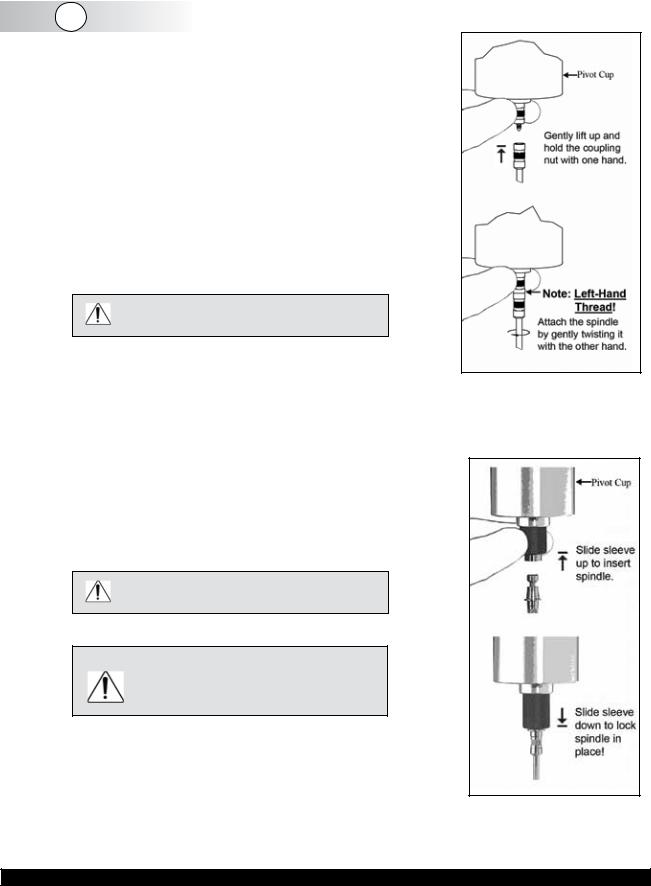
The display will vary depending upon the selection of temperature (°F or °C) and units of viscosity
(cP or mPa•s).
II.2 SELECT Spindle Selection
SPINDLE
LVDV-II+Pro Viscometers are provided with a set of four spindles and a narrow guardleg; RVDV-II+Pro Viscometers come with a set of six spindles and a wider guardleg; HADV-II+Pro and HBDV-II+Pro Viscometers come with a set of six spindles and no guardleg. (SeeAppendix F for more information on the guardleg.)
The spindles are attached to the viscometer by screwing them onto the coupling nut on the lower shaft, see Figure II-6. Note that the spindles have a left-hand thread. The lower shaft should be secured and slightly lifted with one hand while screwing the spindle to the left. The face of the spindle nut and the matching surface on the lower shaft should be smooth and clean to prevent eccentricrotationof thespindle. Spindles can be identifiedby the number on the side of the spindle coupling nut.
The motor should be OFF whenever spindles are being removed or attached.
If your instrument has the EZ-Lock system, the spindles are attached as follows:
With one hand hold the spindle, while gently raising the springloaded outer sleeve to its highest position with the other hand, as shown in Figure II-7. Insert the EZ-Lock Spindle Coupling so that the bottom of the coupling is flush with the bottom of the shaft, and lower the sleeve. The sleeve should easily slide back down to hold the spindle/coupling assembly in place for use. [Spindles can be identified by entry code; look for the number on the side of the EZ-Lock spindle coupling.]
The motor should be OFF whenever spindles are being removed or attached.
Note: KeeptheEZ-LockSpindleCouplingand outer sleeve as clean as possible and free from debris that could become lodged inside the adapter.
The DV-II+Pro must have a Spindle Entry Code number to calculate Viscosity, Shear Rate and Shear Stress values. The DV-II+Pro memory contains parameters for all standard Brookfield spindles including custom spindles and the two digit entry code for each spindle (the complete list of entry codes may be found in Appendix D).
Figure II-6
Figure II-7
Brookfield Engineering Labs., Inc. |
Page 14 |
Manual No. M03-165-F0612 |
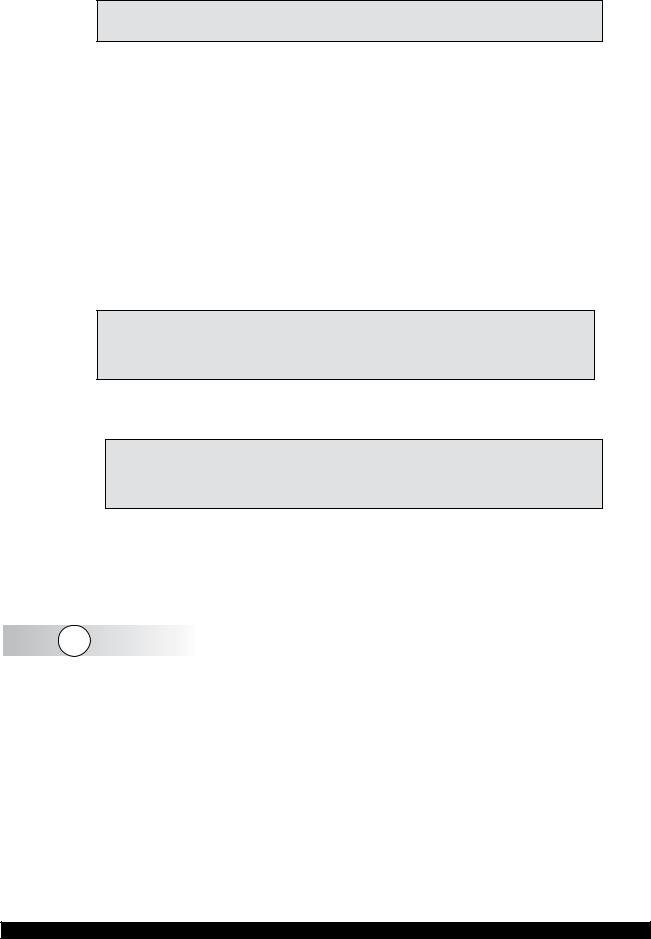
Note: The DV-II+Pro will remember the Spindle Entry Code which was in use when the power was turned off.
Pressing the SELECT SPINDLE key will temporarily display the current selected spindle code in place of temperature and cause the character S to begin to blink . It will blink for about three seconds. If the UP or DOWN ARROW keys are pressed (while S is blinking), the two character spindle value to the right of the S character will begin to change (in either an increasing or decreasing direction depending upon which ARROW key is pressed) for each press of the key. If the ARROW key is pressed and held, the display will scroll through the spindle codes for as long as the ARROW key is depressed. When it reaches the last item in the list (either at the top or bottom of the list) the spindle code displayed will “roll-over” to either the first or last spindle code and the scroll action will continue.
When the desired spindle code is displayed, release the ARROW key to halt further scrolling. Press the SELECT SPINDLE key once again. This will cause the S character to cease blinking and the new spindle code will be accepted for use in viscometer calculations. After 3 seconds the current spindle code will be replaced by the temperature display.
Note: You have approximately three seconds in which to press the SELECT
SPINDLE key before the blinking stops. If you fail to press the SELECT SPINDLE key before the blinking stops you will have to repeat the above steps and re-select the desired spindle.
The DV-II+Pro will begin to calculate using the new spindle parameters as soon as the SELECT SPINDLE key is pressed the second time.
Note: The number 99 spindle is for use with special spindles when using Brookfield’sRheocalccomputerprogram. RefertotheRheocalcoperator manual for further information on using “99” spindles.
The DV-II+Pro may also be programmed at Brookfield Engineering for “special” user spindles.
These “special” spindles will appear on the spindle scroll list starting with designation “AA” and continuing through “AZ”. Contact Brookfield Engineering regarding your needs for special spindles.
II.3 SPEEDSET Speed Selection, Setting, Running
There are 54 speeds programmed into the DV-II+Pro. These speeds correspond to the standard LVT, RVT, HAT and HBT dial models (18 possible speeds altogether) plus 36 additional speeds.
The DV-II+Pro comes with the Sequential Speed Set already selected (see Appendix G). The speed set will start at speed 0.0. It will then scroll up through the LV speeds, pass through speed 0.0 again, and then scroll up through the RV speeds, pass through speed 0.0 again and then repeat the above sequence.
The DV-II+Pro can also be configured by the operator to interleave the LV and RV speeds. See
Section IV.2.3 on Setup for a description of how to install the Interleave Speed Set.
A complete list of speed sets and custom speeds is included in Appendix G. The DV-II+Pro can be programmed to select up to 19 of the 54 speeds for use at any one time. Speed 0.0 is automatically included as one of the nineteen (19) speeds. See Section IV. 2.3.2 on Setup for a description of
Brookfield Engineering Labs., Inc. |
Page 15 |
Manual No. M03-165-F0612 |

how to install a Custom Speed Set.
To select a Viscometer speed first press either the UPor DOWN arrow keys which will cause the area to the right of RPM to display the currently selected speed. Figure II-8 shows the DV-II+Pro is operating at 6.0 RPM, and the current selected speed is 6.0 RPM.
Caution: If you select custom speeds but do not choose any speed values, only zero RPM will be available in the scroll list.
CP 123.4 |
20.1C |
6.0RPM6.0 |
% 15.6 |
|
|
Figure II-8
If the ARROW key is pressed just once and then released, the characters “RPM” will blink for three seconds, then will cease blinking resulting in no change to the speed entry.
Note: The speed selection process remembers the last value of scrolled-to speed so that the next time you initiate a speed change (by pressing an ARROW key), the DV-II+Pro will begin its scroll display from the last entered value.
The last-scrolled-to speed does not necessarily have to be the same as the speed at which the DVII+Pro is currently running. The user may operate at a given speed and pre-set the DV-II+Pro to the next desired speed before that speed will be used. For example, if the DV-II+Pro is currently running at 6.0 RPM and was previously scrolled to 12 RPM, a single press of either ARROW key would result in the Figure II-9 screen display:
cP 123.4 |
20.1C |
6.0RPM12 |
% 15.6 |
|
|
Figure II-9
Pressing the SET SPEED key would cause the DV-II+Pro to begin running at 12 RPM.
If the user did not press the SET SPEED key, the DV-II+Pro would continue to run at its current speed of 6 RPM. In fact, you may scroll to a new speed (12 RPM in this example) and press the SET SPEED key at any future time (without further pressing an ARROW key) to immediately cause the DV-II+Pro to run at the new speed. Pressing the ARROW key at any time reminds the operator of what was selected for the next speed.
If an ARROW key is pressed and held the DV-II+Pro will scroll up (or down) through the speed table. When it reaches the last speed in the list (either at the top or bottom of the list) the speed displayed will “roll-over” to either the first or last speed in the table and the scroll action will continue.
When the required speed is displayed, release the ARROW key to halt further scrolling. The selected speed will be visible for approximately two seconds. Press the SET SPEED key to immediately begin rotation at the new speed.
Pressing the MOTOR ON/OFF/ESCAPE key stops the Viscometer spindle rotation. Pressing this key sets the DV-II+Pro to 0.0 RPM and causes the screen display to change as shown in Figure
II-10:
Brookfield Engineering Labs., Inc. |
Page 16 |
Manual No. M03-165-F0612 |
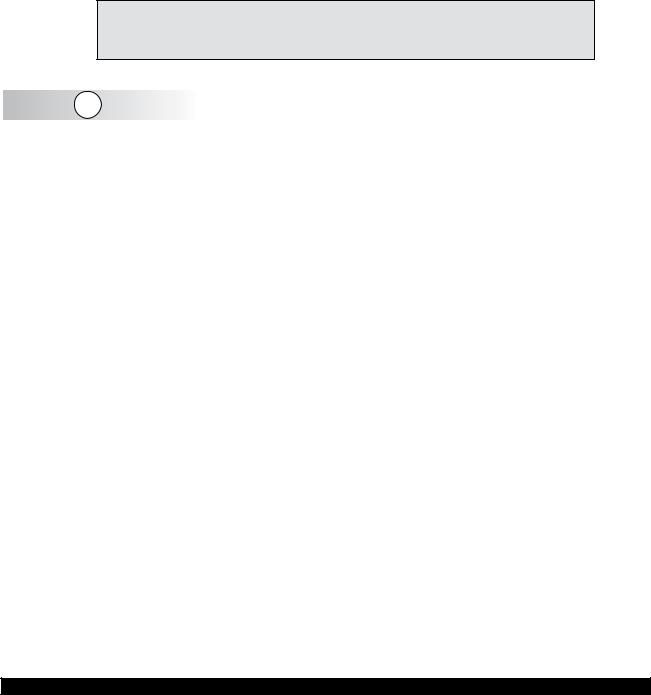
cP 0.0 |
20.1C |
OFFRPM |
% 0.0 |
|
|
Figure II-10
Pressing the MOTOR ON/OFF/ESCAPE key again immediately starts the DV-II+Pro running at the last scrolled-to-speed. If you had been running at 12 RPM, pressed MOTOR ON/OFF/ ESCAPE and then re-started the DV-II+Pro by pressing MOTOR ON/OFF/ESCAPE once again, you would again be running at 12 RPM. However, if while the motor was off you had scrolled to a new speed of 0.5 RPM, pressing the MOTOR ON/OFF/ESCAPE key would start the DVII+Pro running at 0.5 RPM.
Note: During both spindle or speed selection and scrolling operations, the DV-II+Pro will continue to calculate and display Viscometer data as selected.
II.4 |
DISPLAY Display Selection |
|
SELECT |
Viscosity (displayed in units of cP or mPa•s), Shear Stress and Shear Rate are displayed on the left side of the top line. You may “step” through the three display options by pressing the SELECT DISPLAY key. For example, the DV-II+Pro is currently displaying Viscosity in Figure II-11:
cP 123e3 |
20.1C |
6.0RPM |
% 15.6 |
|
|
Figure II-11
If the viscosity value exceeds 99,999 scientific notation is used. In Figure II-10, the viscosity value is 123,000 cP.
The first press of the SELECT DISPLAYkey would display Shear Stress (SS) in Dynes/cm2 (or Newtons/m2), see Figure II-12:
SS 29.0 |
20.1C |
6.0RPM |
% 15.6 |
|
|
Figure II-12
If the shear stress value exceeds 99,999, scientific notation is used.
The next press of the SELECT DISPLAY key would display Shear Rate (SR) in 1/Sec (Figure
II-13).
Brookfield Engineering Labs., Inc. |
Page 17 |
Manual No. M03-165-F0612 |

SR 40.0 |
20.1C |
6.0RPM |
% 15.6 |
|
|
Figure II-13
One more press of the SELECT DISPLAY key would result in a return to the viscosity screen, as shown in Figure II-11.
Note:
1.Youmaystepthroughthedisplayatanytime. Thiswillnotinterrupt any Viscometer calculations that are in progress.
2.Display of shear rate and shear stress requires selection of appropriate spindles. Otherwise, values displayed will be zero (0). Refer to Appendix D.
Shear rate and shear stress values will be displayed for any spindle with a SRC value greater than zero.
Units of Measurement
TheDV-II+ProViscometercanbeconfiguredusingtheSETUPoption(SectionIV.2.2)todisplay/ print in either the CGS or SI system of units.
ENTER
II.5 AUTO Autorange
RANGE
The ENTER/AUTO RANGE key functions as Auto Range and allows you to determine the maximum calculated viscosity (full scale reading) possible with the current spindle/speed setting only when in the default screen. Pressing the key at any time will cause the current viscosity display to change and show that maximum viscosity. Thescreenareadisplaying%(torque)willnowdisplayaflashing “%100.0” to indicate this special condition. This maximum viscosity and flashing %100.0 value will be displayed for as long as the ENTER/AUTO RANGE key is depressed. Figure II-14 shows the AUTO RANGE function for the situation where the No. 1 LV spindle is rotating at 60 rpm. The full scale range is 100.0 cP (or 100.0 mPa.s).
cP |
100.0 |
S61 |
60 |
RPM |
% 100 |
|
|
|
Figure II-14
Note:
1.If the RPM is 0.0, the maximum viscosity displayed will be 0.0 cP(or 0.0 mPa.s).
2.While the Viscometer is in the Auto Range mode, any data sent to an attached printer or computer reflects the displayed values (i.e. Auto Range values).
3.This function is only available when in the default screen.
4.If the motor is Off, Auto Range is not available.
Brookfield Engineering Labs., Inc. |
Page 18 |
Manual No. M03-165-F0612 |

II.6 Out of Range
The DV-II+Pro gives indications for out-of-range operation. When % (Torque) readings exceed 100% (over-range), the display changes to that shown in Figure II-15; EEEE will also appear in the display for shear stress:
cP |
EEEE |
20.1C |
10 |
RPM |
% EEEE |
|
|
|
Figure II-15
You must change either speed or spindle to correct this condition. If you operate at spindle speeds that produce % (Torque) below 10.0 %, the DV-II+Pro flashes the % (Torque), cP (Viscosity), SS (Shear Stress) and SR (Shear Rate) as shown in Figure II-16:
CP |
12.4 |
20.1C |
10 |
RPM |
% 8.2 |
|
|
|
Figure II-16
Negative % (Torque) will be displayed as shown in Figure II-17:
cP |
---- |
20.1C |
10 |
RPM |
% -2.2 |
|
|
|
Figure II-17
Figure II-18 is an example of the printed output of each of the above conditions.
Normal Operation:
RPM=50 |
M=RV |
S=29 %=51.4 |
cP=10280 |
D/CM2=1285 |
1/SEC=12.3 |
T=20.1C Z00:30 |
Over-Range Operation (>100% torque) (see Fig. 15): |
|
|
||||
RPM=50 |
M=RV |
S=29 %=EEEE |
cP=EEEE |
D/CM2=EEEE |
1/SEC=12.3 |
T=20.1C Z00:30 |
Under-Range Operation (<10% torque) (see Fig. 16): |
|
|
||||
? RPM=50 |
M=RV |
S=29 %=5.2 |
cP=1040 |
D/CM2=130 |
1/SEC=12.3 |
T=20.1C Z00:30 |
Negative Torque Operation (see Fig. 17): |
|
|
|
|||
RPM=50 |
M=RV |
S=29 %=-0.1 |
cP=---- |
D/CM2=---- |
1/SEC=12.3 |
T=20.1C Z00:30 |
|
M = Torque Range |
T = Temperature |
Z = Time |
|
||
Figure II-18
Brookfield Engineering Labs., Inc. |
Page 19 |
Manual No. M03-165-F0612 |
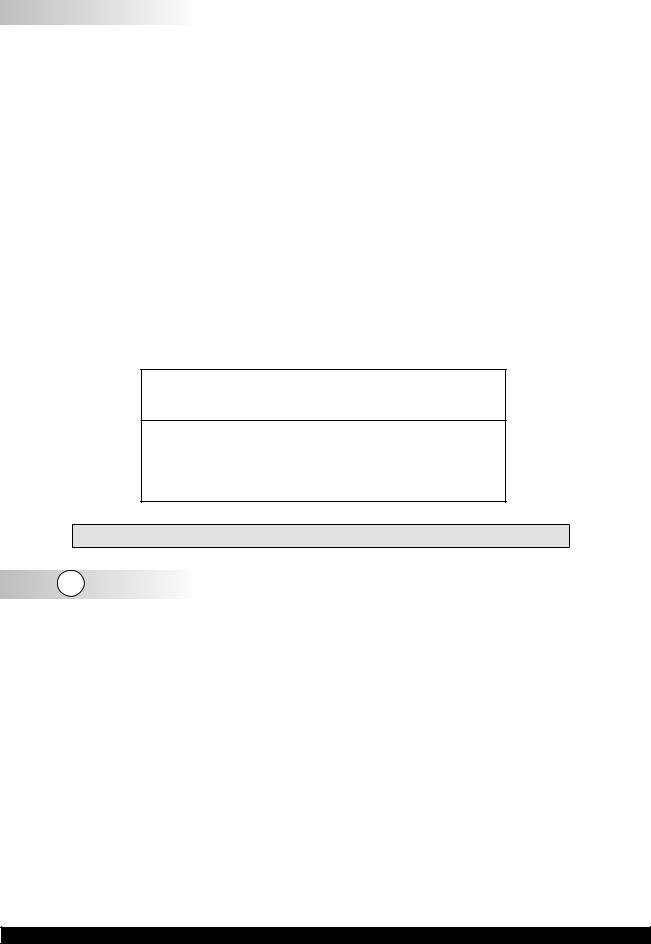
II.7 Temperature Display
The DV-II+Pro displays the measured temperature when an RTD temperature probe is connected. Temperature may be displayed in either ˚C (Centigrade) or ˚F (Fahrenheit) units, depending upon selection from the Options menu. As received, the default temperature display will be in ˚C
(Centigrade) as shown in the Figure II-19:
CP |
123.4 |
20.1C |
10 |
RPM |
% 19.7 |
|
|
|
Figure II-19
If you turn on the DV-II+Pro with the temperature probe disconnected, or remove the temperature probe at any point after power-up, the display will indicate “- - - -C”. The four “dashes” indicate the absence of the probe. If you were displaying temperature in Fahrenheit units, the C would be replaced by an F. Accuracy of temperature measurement for the DV-II+Pro is shown in Table 1.
Table 1
Temperature Accuracies for
DV-II+Pro Viscometer
Temperature Range |
Temperature Accuracy |
-100°C to +149°C |
±1.0°C |
+150°C to +300°C |
±2.0°C |
Note: The temperature probe may be connected/disconnected at any time.
II.8 PRINT Printing
The DV-II+Pro will print data to an attached Serial (RS232) or Parallel (centronics) printer. The printer must be attached to the appropriate rear panel output connector. See Appendix H for configuration and connection requirements.
Data may be printed in two ways:
1.Pressing the PRINT key once (for less than three (3) seconds) will result in the printing of one standard print line.
2.If the PRINT key is pressed and held for more than three (3) seconds, the DV-II+Pro will then begin continuous printer output at a print rate interval selected via the Options menu (see
Section IV.3.3). The display will show a flashing P in front of the % sign. See Figure II-20.
cP |
123.4 |
20.1C |
10 |
RPM |
P% 19.7 |
|
|
|
Figure II-20
Brookfield Engineering Labs., Inc. |
Page 20 |
Manual No. M03-165-F0612 |
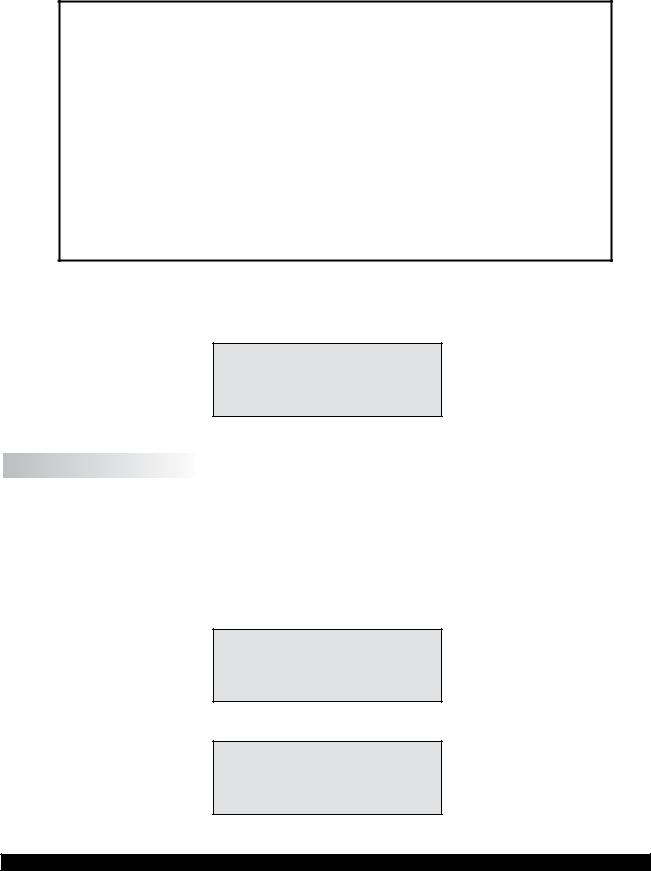
To stop continuous printing, press the PRINT key for one (1) second. The flashing P will disappear on the viscometer display.
Figure II-21 is an example of the print strings for CGS and SI units.
For the case of CGS units with non-exponential results: |
50 |
60 |
70 |
80 |
||||||||||||||
1 |
10 |
20 |
30 |
40 |
|
|||||||||||||
|
|
|
|
|
|
|
|
|
|
|
|
|
|
|
|
|
|
|
|
|
RPM=XXX M=XXXXX S=XX %=XXX.X cP=XXXXX |
|
D/CM2=XXXXX |
1/SEC=XXXXX |
T=XX.XC |
ZXX=XX |
|
||||||||||
and CGS units with exponential results. |
40 |
|
50 |
60 |
70 |
80 |
||||||||||||
1 |
10 |
20 |
30 |
|
||||||||||||||
|
|
|
|
|
|
|
|
|
|
|
|
|
|
|
|
|
|
|
|
|
RPM=XXX M=XXXXX S=XX %=XXX.X cP=XXXeX |
|
D/CM2=XXXeX |
1/SEC=XXXXX |
T=XX.XC |
ZXX=XX |
|||||||||||
Similarly, for SI units with non-exponential results. |
40 |
|
50 |
60 |
70 |
80 |
||||||||||||
1 |
10 |
20 |
30 |
|
||||||||||||||
|
|
|
|
|
|
|
|
|
|
|
|
|
|
|
|
|
|
|
|
|
RPM=XXX M=XXXXX S=XX %=XXX.X mPas=XXXXX N/M2=XXXXX |
1/SEC=XXXXX |
T=XX.XC |
ZXX=XX |
|
||||||||||||
and SI units with exponential results. |
40 |
|
50 |
60 |
70 |
80 |
||||||||||||
1 |
10 |
20 |
30 |
|
||||||||||||||
|
|
|
|
|
|
|
|
|
|
|
|
|
|
|
|
|
|
|
|
|
RPM=XXX M=XXXXX S=XX %=XXX.X mPas=XXXeX |
N/M2=XXXeX |
1/SEC=XXXXX |
T=XX.XC |
ZXX=XX |
|
|||||||||||
M = Torque T = Temperature Z = Time
Figure II-21
When printing via the parallel port, please note that if a printer is not attached to the viscometer, the following screen appears:
PRINTER ERROR
CHECK CONNECTION
Figure II-22
II.9 External Control Mode
The DV-II+Pro Viscometer can be used in conjunction with Brookfield software, Rheocalc (V2.4 or higher). Through Rheocalc, all viscometer functions are controlled by the computer. The DVII+Pro must be set to the external control mode to allow for proper communication with Rheocalc.
To configure the external control mode, connect cable DVP-80 to the serial port on the DV-II+Pro before turning on the DV-II+Pro. With the DVP-80 cable in place, the DV-II+Pro will present the screen shown in Figure II-23 when it is turned on. If external control is selected, the DV-II+Pro will display Figure II-24 and only accept control commands from Rheocalc software.
hEXTERNAL MODE iSTANDALONE MODE
Figure II-23
V6.3 RV
EXTERNAL MODE
Figure II-24
Brookfield Engineering Labs., Inc. |
Page 21 |
Manual No. M03-165-F0612 |

The DV-II+Pro may be set to stand alone mode by turning it OFF and ON again and selecting “Stand Alone” or by removing the DVP-80 cable prior to turning the DV-II+Pro on.
Note: TheDV-II+ProcannotcommunicatewithDVLOADERsoftwarein the external control mode. Choose “Stand Alone” when presented with Figure II-23 if you want to use DVLOADER.
For information on controlling the DV-II+Pro from Rheocalc software, check the HELP menu within Rheocalc.
II.10 Making Viscosity Measurements
Thefollowinggeneralprocedureisusedformakingviscositymeasurements. Brookfieldrecommends the use of a 600 ml Low Form Griffin beaker (Brookfield Part No. BKR-600ml) when using LV/
RV/HA/HB spindles.
1.Mount the guardleg on the DV-II+Pro Viscometer (LVand RVseries) and insert into the container.
2.Insert and center spindle in the test material until the fluid’s level is at the immersion groove on the spindle’s shaft. With a disc-type spindle, it is necessary to tilt the spindle slightly while immersing to avoid trapping air bubbles on its surface.
A)If you have a standard viscometer, attach the spindle to the coupling nut on the lower shaft of the viscometer. Lift the shaft slightly, holding it firmly with one hand while screwing the spindle on with the other (note: left-hand thread). Avoid putting side thrust on the shaft. Verify the proper spindle immersion depth and that the viscometer is level.
B)If you have an EZ-Lock viscometer, with one hand hold the spindle, while gently raising the spring-loaded outer sleeve to its highest position with the other hand, as shown in Figure II-7. Insert the EZ-Lock Spindle Coupling so that the bottom of the coupling is flush with the bottom of the shaft, and lower the sleeve. The sleeve should easily slide back down to hold the spindle/coupling assembly in place for use.
3.Theprocessofselectingaspindleandspeedforanunknownfluidisnormallytrialanderror. An appropriate selection will result in measurements made between 10-100 on the instrument
%torque scale. Two general rules will help in the trial and error process.
1)Viscosity range is inversely proportional to the size of the spindle.
2)Viscosity range is inversely proportional to the rotational speed.
To measure high viscosity, choose a small spindle and/or a slow speed. If the chosen spindle/ speed results in a reading above 100%, then reduce the speed or choose a smaller spindle.
Experimentation may reveal that several spindle/speed combinations will produce satisfactory results between 10-100%. When this circumstance occurs, any of the spindles may be selected.
Non-Newtonian fluid behavior can result in the measured viscosity changing if the spindle and/ or speed is changed. See our publication, “More Solutions to Sticky Problems,” for more detail.
Turn on motor.
Allow time for the indicated reading to stabilize. The time required for stabilization will depend on the speed at which theViscometer is running and the characteristics of the sample fluid. For
Brookfield Engineering Labs., Inc. |
Page 22 |
Manual No. M03-165-F0612 |

maximum accuracy, readings below 10% should be avoided. Record values.
4.Press the MOTOR ON/OFF/ESCAPE key and turn the motor “OFF” when changing a spindle or changing samples. Remove spindle before cleaning.
5.Interpretation of results and the instrument’s use with non-Newtonian and thixotropic materials is discussed in the booklet, “More Solutions to Sticky Problems”, and in Appendix C, Variables in Viscosity Measurements.
II.11 Time Modes for Viscosity Measurement
The Time Modes allow the viscometer user to implement the unattended Time to Stop and Time to Torque capabilities of the DV-II+Pro Viscometer. These features will allow the user to set up the viscometer (i.e. select spindle and speed) and then record readings for a fixed period of time (Time to Stop) or until a set torque value is attained (Time to Torque). When timing begins, a message will be displayed showing time remaining (or time elapsed) and the appropriate display item (viscosity or torque) will be updated continuously during the event. Upon completion, the viscometer will stop and display a screen stating that the test is complete and will also display the final recorded value for the viscosity in the first case, or the time in minutes and seconds to reach the torque limit in the second case. Pressing the UP or DOWN ARROW keys will allow additional viscometer data to be examined. Pressing any other key (except the PRINT or ENTER/AUTORANGE key) will bring the user back to the default (normal) viscometer display with the motor OFF. Refer to the Time Modes in Section IV.3.
Brookfield Engineering Labs., Inc. |
Page 23 |
Manual No. M03-165-F0612 |

III. MAKING VISCOSITY MEASUREMENTS
III.1 Quick Start
The DV-II+Pro Viscometer uses the same methodology for viscosity measurements as the
Brookfield Dial Reading Viscometers and DV series of Digital Viscometers. If you have experience with other Brookfield equipment, this section will give you quick steps for taking a viscosity reading. If you have not used a Brookfield Viscometer before, skip this section and go to Section III.2 for a detailed description.
A)Assemble and level viscometer (Section I.4)
B)Turn power on
C)Autozero the viscometer (Section II.1)
D)Enter the spindle number using the SELECT SPINDLE key (Section II.2).
E)Introduce the spindle into the sample and attach the spindle to the coupling nut. NOTE: Left-hand threads. If equipped with EZ-Lock, use the appropriate procedure to connect the spindle [see Section II.2].
F)Enter the speed of rotation using the number pad and ENTER key (Section II.3).
G)Record % torque and viscosity.
III.2 Preparations for Making Measurements
A)VISCOMETER: The DV-II+Pro should be turned on, leveld and autozeroed. The level is adjusted using the two feet on the bottom of the base and confirmed using the bubble on the top of the head. Adjust the feet until the bubble is inside the center target. Set the level prior to autozero and check the level prior to each measurement.
The proper level is essential for correct operation of the DV-II+Pro.
B)SAMPLE: The fluid to be measured (sample) must be in a container. The standard spindles supplied with the DV-II+Pro [LV (1-4), RV (2-7), or HA/HB (2-7)] are designed to be used with a 600 mL low form Griffin beaker (or equivalent container with a diameter of 8.25cm). The same applies to the optional RV1, HA/HB1, and Vane spindles. Many other spindle systems are supplied from Brookfield with specific sample chambers such as the Small SampleAdapter,
UL Adapter and Thermosel.
Brookfieldrecommendsthatyouusetheappropriatecontainerfortheselectedspindle. Youmay choose to use an alternate container for convenience, however, this may have an effect on the measured viscosity. The DV-II+Pro is calibrated considering the specified container. Alternate containers will provide results that are repeatable but not “true”.
The LV (1-4) and RV (1-7) are designed to be used with the guardleg attached. Measurements made without the guardleg will provide repeatable results but may not provide “true” results.
When comparing data with others, be sure to specify the sample container and presence/ absence of the guardleg.
Many samples must be controlled to a specific temperature for viscosity measurement. When conditioning a sample for temperature, be sure to temperature control the container and spindle as well as the sample.
Brookfield Engineering Labs., Inc. |
Page 24 |
Manual No. M03-165-F0612 |

Please see our publication, “More Solutions to Sticky Problems”, for more detail relating to sample preparation.
III.3 Selecting a Spindle/Speed
The DV-II+Pro has the capability of measuring viscosity over an extremely wide range. For example, the RVDV-II+Pro can measure fluids within the range of 100-40,000,000 cP. This range is achieved through the use of several spindles over many speeds. See Appendix B for details.
Theprocessofselectingaspindleandspeedforanunknownfluidisnormallytrialanderror. An appropriate selection will result in measurements made between 10-100 on the instrument
%torque scale. Two general rules will help in the trial and error process.
1)Viscosity range is inversely proportional to the size of the spindle.
2)Viscosity range is inversely proportional to the rotational speed.
In other words: to measure high viscosity, choose a small spindle and/or a slow speed. If the chosen spindle/speed results in a reading above 100%, then reduce the speed or choose a smaller spindle.
Experimentation may reveal that several spindle/speed combinations will produce satisfactory results between 10-100%. When this circumstance occurs, any of the spindles may be selected.
Non-Newtonian fluid behavior can result in the measured viscosity and yield stress changing if the spindle and/or speed is changed. See our publication, “More Solutions to Sticky Problems,” for more details.
When viscosity data must be compared, be sure to use the same test methodology: namely the same instrument, spindle, speed, container, temperature and test time.
III.4 Multiple Data Points
The majority of viscosity and yield stress measurements are made at the quality control level and often consist of a single data point. The test is conducted with one spindle at one speed. The data point is a useful bench mark for the go/no-go decision in a production setting. The DV-II+Pro can be used for single point measurement.
Manyfluidsexhibitacharacteristicchangeinviscosityandyieldstresswithachangeinapplied force. Thisnon-Newtonianflowbehavioriscommonlyseeninpaints,coatingsandfoodproducts as a decrease in viscosity as shear rate increases or an increase in yield stress as a rotational speed increases. This behavior cannot be detected or evaluated with the single point measurement.
Non-Newtonian flow is analyzed through the collection of viscosity data over a range of shear rates and the generation of a graph of viscosity versus shear rate (a rheogram). This information will allow for a more complete characterization of a fluid and may help in formulation and production of a product. The DV-II+Pro is capable of collecting multiple data points for comprehensive analysis of flow behavior.
More information on flow behavior, shear rate and rheograms is available in our publication,
“More Solutions to Sticky Problems.”
Brookfield Engineering Labs., Inc. |
Page 25 |
Manual No. M03-165-F0612 |

IV. OPTIONS
IV.1 |
OPTION |
Introduction to OPTIONS |
TAB F |
The OPTIONS/TAB key provides access to the configuration (Setup) of the DV-II+Pro Viscometer as well as special functions that can enhance the user’s ability to make viscosity measurements.
The Options menu, shown in Table 1, gives a complete picture of the various configuration choices and special functions.
Quick References to Options
|
|
|
Table 2 |
|
|
|
Options Menu |
|
|
|
|
|
SETUP: |
— |
°F or °C |
|
Temperature |
||
* |
Units |
— |
CGS or SI |
Speed Sets |
— |
Sequential, Interleave, Custom |
|
|
Printer Port |
— Serial (RS232) or Parallel |
|
|
Data Averaging |
— |
Display Only |
* |
TIME TO STOP |
|
|
* |
TIME TO TORQUE |
|
|
SET PRINT TIME:
Set the Printing Time
PC PROG (ON/OFF):
Enables/Disables Communication of Serial (RS232) Port
* DOWNLOAD A PROGRAM:
Link to PC to Receive a B.E.V.I.S. Program
(B.E.V.I.S. = Brookfield Engineering Viscometer Instruction Set)
* RUN A PROGRAM:
Execute a B.E.V.I.S. Program
*Not available when motor is ON
Pressing OPTIONS/TAB places you into the Options menu at the last option selected. The following keys are active and perform as follows:
£UP ARROW
£ |
DOWN ARROW |
|
|
|
|
OPTION |
OPTIONS/TAB |
|
TAB |
F |
|
-Scrolls up through menu or selects new value from list.
-Scrolls down through menu or selects new value from list.
-Toggles between options.
Brookfield Engineering Labs., Inc. |
Page 26 |
Manual No. M03-165-F0612 |
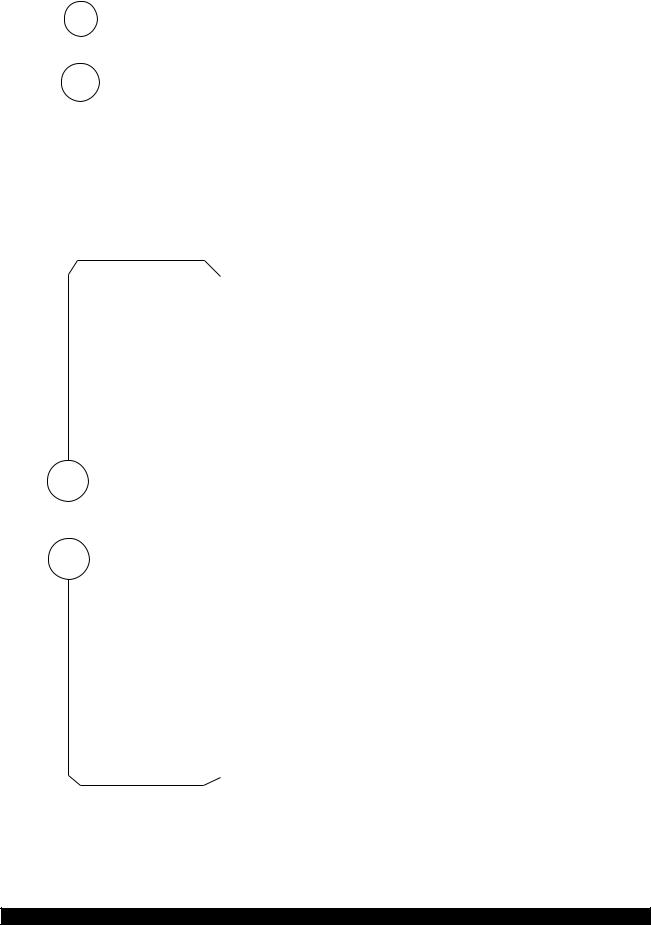
ENTER |
ENTER/AUTORANGE |
- Accepts the currently flashing option and moves user to |
AUTO |
||
RANGE |
|
the next level (if applicable) of the selected option. |
|
|
MOTOR
ON/OFF MOTOR ON/OFF/ESCAPE - Cancels current operation and backs user out one menu level. Repeated pressing will back the user out to the default screen. While in the Options menu, the
MOTOR ON/OFF/ESCAPE key does not cause the viscometer motor to turn on or off!
The Options menu screens will appear, as shown in Figure IV-1, if you cycle through the possible options using the UP/DOWN arrows.
£
£
$
|
SETUP |
# |
OR |
|
DTIME TO TORQUE |
$ |
|
|
|
|
|
|
2 |
|
|
|
DTIME TO TORQUE |
# |
OR |
|
SET PRINT TIME |
$ |
|
|
|
|
|
2 |
|
|
|
|
SET PRINT TIME |
# |
OR |
|
DPC PROG OFF |
$ |
|
|
|
|
|
2 |
|
|
|
|
DPC PROG OFF |
# |
OR |
|
DOWNLOAD A PROG |
$ |
|
|
|
|
|
2 |
|
|
|
|
DOWNLOAD A PROG |
# |
OR |
|
RUN A PROG |
$ |
|
|
|
|
|
# |
|
|
|
Figure IV-1
SETUP |
# |
DTIME TO STOP |
$ |
|
|
DTIME TO STOP |
# |
SET PRINT TIME |
$ |
|
|
SET PRINT TIME |
# |
DPC PROG ON |
$ |
|
|
DPC PROG ON |
# |
DOWNLOAD A PROG |
$ |
|
|
Brookfield Engineering Labs., Inc. |
Page 27 |
Manual No. M03-165-F0612 |

On entry to the Options menu, the following rules regarding current viscometer operation are in force:
1.Printer output will be suppressed when in the Custom Speed option, the Time to Torque and Time to Stop options, the Download A Program and Run A Program options. It will be continued when any other option is selected.
2.If the motor is ON when the user enters the Options menu, choices will be limited to:
CGS/SI units (under SETUP), °F/°C units (under SETUP), PRINTING SELECTIONS and PC PROG.
3.The last selected menu option will be flashing.
Selecting an Option
The following is a quick reference for entering and using the OPTIONS menu:
Press 
 to enter Options Menu.
to enter Options Menu.
Press or
to scroll to a specific option.
For Options:
Press
Press
IV.2 Setup
OPTIONS TAB 
ENTER
AUTO
RANGE
totogglebetweenthechoicesavailableforaspecificoptionwhenindicated. to select the flashing option.
From themainOptionsscreen,the userscrollsup ordown untilthefollowingscreenisdisplayed:
SETUP |
# |
DTIME TO TORQUE |
$ |
|
|
Figure IV-2
A press of the ENTER/AUTORANGE key takes you into the Setup sub-menu (Figure IV-3). As in the main Options menu, you can scroll up or down through the various Setup options. In order to access all options, the motor must be turned off.
Brookfield Engineering Labs., Inc. |
Page 28 |
Manual No. M03-165-F0612 |
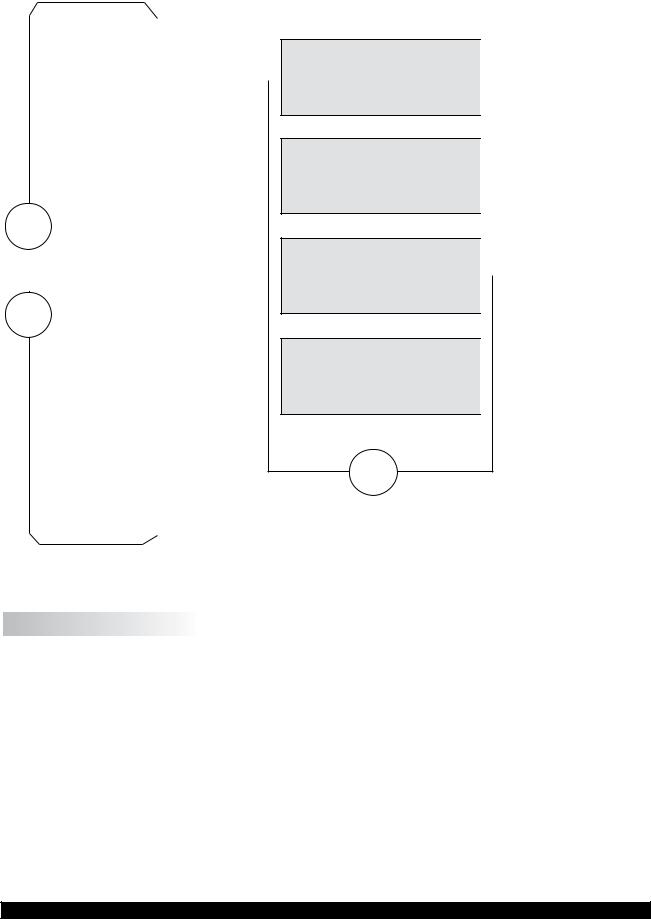
£
£
$
D°F(FAHRENHEIT) |
# |
1 |
|
DCGS UNITS |
$ |
|
|
|
|
|
|
2 |
|
|
|
D°F(FAHRENHEIT) |
# |
1 |
|
DCGS UNITS |
$ |
|
|
|
|
|
|
2 |
|
|
|
DCGS UNITS |
# |
1 |
|
DSEQUENTIAL |
$ |
|
|
|
|
|
|
2 |
|
|
|
DSEQUENTIAL |
# |
1 |
|
DPRINT SERIAL |
$ |
|
|
|
|
|
|
2 |
|
|
|
DPRINT SERIAL |
# |
|
|
DDATA AVERAGING |
$ |
|
|
|
|
|
|
# |
|
|
|
D°C(CENTIGRADE) |
# |
|
|
|
|
DCGS UNITS |
$ |
|
|
|
|
D°F(FAHRENHEIT) |
# |
|
|
|
|
|
|
|
|
||
|
|
|
|
||
DSI UNITS |
$ |
|
|
|
|
|
|
|
1 |
|
|
|
|
|
|
|
|
DCGS UNITS |
# |
|
DCGS UNITS |
# |
|
DINTERLEAVE |
$ |
|
DCUSTOM SPEEDS$ |
||
DSEQUENTIAL |
# |
|
|
|
|
|
|
|
|
||
|
|
|
|
||
DPRINT PARALLEL |
$ |
|
|
|
|
|
|
|
|
|
|
OPTION
TAB F
Figure IV-3
IV.2.1 Temperature Display
The DV-II+Pro viscometer can display temperature in either degrees Centigrade or degrees Fahrenheit. On entry (assuming the viscometer is currently displaying °F), you will be presented with:
D°F(FAHRENHEIT) |
# |
DCGS UNITS |
$ |
|
|
Figure IV-4
A press of the OPTIONS/TAB key at this point will “toggle” between the two available temperature scale options as shown in Figure IV-5:
Brookfield Engineering Labs., Inc. |
Page 29 |
Manual No. M03-165-F0612 |

D°F(FAHRENHEIT) |
$# |
" |
D°C(CENTIGRADE) |
# |
DCGS UNITS |
DCGS UNITS |
$ |
||
|
|
|
|
|
Figure IV-5
To select the temperature display mode, press the ENTER/AUTORANGE key. You automatically exit the Setup menu with the viscometer displaying temperature in the selected scale. You must press the ENTER/AUTORANGE key to select the flashing option.
IV.2.2 Units of Measurement
Selecting units of measurement is identical to that for temperature described above. The screen display shows:
D°F(FAHRENHEIT) |
# |
DCGS UNITSê |
$ |
|
|
Figure IV-6
A press of the OPTIONS/TAB key at this point allows the user to “toggle” between the two available data display units as shown in Figure IV-7:
D°F(FAHRENHEIT) |
$# |
" |
DF(FAHRENHEIT) |
# |
DCGS UNITS |
DSI UNITS |
$ |
||
|
|
|
|
|
É
Figure IV-7
Pressing the ENTER/AUTORANGE key selects the display units, which are flashing, followed by an exit of the Setup menu. You must press the ENTER/AUTORANGE key to select the flashing option.
IV.2.3 Motor Speed Set Selection
This selection must be done with the motor off. Scrolling in the Setup options menu to the speed set selection option yields the following screen display:
DCGS UNITS |
# |
DSEQUENTIAL |
$ |
|
|
Figure IV-8
The last selected speed set option is displayed, in this case, Sequential. For each press of the
OPTIONS/TAB key, the display shows selectable options (Figure IV-9). You must press the ENTER/
Brookfield Engineering Labs., Inc. |
Page 30 |
Manual No. M03-165-F0612 |
